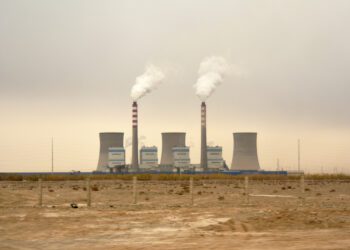Make rules that are simple and apply to all companies.
The role of environmental, social, and governance (ESG) issues in the corporate world is growing fast, but that growth has come with controversy. In June, the CEO of DWS Group, one of Germany’s leading asset management firms, resigned after the company’s Frankfurt offices were raided by police amid claims of greenwashing, or deceiving people about an organization’s true environmental commitments and actions. DWS stands accused by one of its former executives of misleading investors about how much of its $900 billion assets under management were invested using ESG criteria.
This was followed in the United States by reports that the Securities and Exchange Commission is scrutinizing Goldman Sachs in light of the regulator’s proposal to establish disclosure requirements for funds and advisers that market themselves as having an ESG focus.
Such controversies result in part from a lack of standardized metrics by which regulators, investors, and other stakeholders can evaluate companies’ ESG initiatives. Currently, ESG reporting is something of a Wild West, without clear measurements of impact and performance.
In recent years, companies have increasingly talked about their commitment to ESG, and the environmental component is particularly urgent since climate change is an existential threat. But if their commitment to the climate amounts to more than mere lip service—and if regulators are to prevent greenwashing, rather than responding after the fact—the first step will be to measure accurately the corporate sector’s level of greenhouse gas emissions.
A range of big companies (including BP, Google, Microsoft, Unilever, and United Airlines) have pledged to cut their carbon emissions, but they are in the minority. In 2019, less than 2,000 companies globally shared their emissions either to the Carbon Disclosure Project or in their annual or ESG reports, according to S&P Global Trucost data. Much of corporate emissions reporting worldwide remains voluntary and unaudited. For this reason, it is important for governments to mandate that companies—both public and private—report their greenhouse gas emissions and have these disclosures audited. This will enable policy makers and the public to get a picture of the corporate sector’s impact on the problem.
But how should we measure emissions?
At this point, the debate is moving on from whether to compel companies to report their emissions; the focus has become how best to measure those emissions. Regulators in the US, UK, and EU are preparing for a world in which at least publicly traded companies make regular disclosures. And the International Financial Reporting Standards Foundation has created the International Sustainability Standards Board in order to set global reporting standards.
The ISSB has put forward two important prototype standards. One of these standards proposes that companies be required to disclose their climate-related risks and opportunities, spelling out the effects these would have on their financial position, as well as management’s strategy in response, including plans to adapt the business model accordingly. The standard would also require organizations to report their impact on climate change by measuring and disclosing their carbon emissions.
This twin-track approach to reporting—providing information on both an organization’s climate risks and its environmental impact—has also been proposed by the SEC with regard to regulating publicly listed companies in the US.
Establishing a yardstick for climate impact is critical. It would help investors, policy makers, and others understand the extent of companies’ contributions to overall emissions as well as assess the associated climate damages, perhaps even monetarily. It would also enable investors and stakeholders to compare the performance of different companies. This benchmarking could ultimately create incentives for voluntary reductions as well as lend credibility to emissions-reduction commitments. Lastly, it could help spur green innovation as companies try to lower their footprint not by manipulating the figures but by adjusting their activities and investing in technology that would help them be more energy efficient or otherwise reduce emissions.
To be effective, such a metric would have to be clear, simple, and hard to manipulate. It would also have to be audited or verified, and the disclosure would have to be enforced. The more complex the measurement system, the more vulnerable it would be to the kind of creative accounting that undermines trust and accountability.
Three types of emissions reporting
What exactly should companies be mandated to report? Broadly speaking, there are three scopes of carbon emissions, as outlined by the international Greenhouse Gas Protocol developed by the World Resources Institute, a global research nonprofit.
Scope 1 emissions reporting is the most straightforward. It essentially details that a reporting organization disclose its direct emissions, those from sources that it directly owns or controls. For example, a delivery company would report the emissions produced by its trucks and jets; a manufacturing plant would count the carbon emitted by its smoke stacks.
Scope 2 emissions reporting accounts for some “indirect emissions,” meaning those that are produced as a consequence of the activities of the reporting organization, but which occur at sources owned or controlled by another organization. Scope 2 emissions are from purchased energy. Thus, a company would report the emissions that were produced by its power supplier in generating energy for it.
Scope 3 expands indirect-emissions reporting further to include an organization’s entire supply chain. These “upstream emissions” would extend beyond energy to all the organization’s clients, partners, and suppliers. For example, a phone maker would have to report the carbon emissions produced by all the suppliers that manufacture the components that go into the final product. Scope 3 also includes “downstream emissions” that are produced by users of the final product. A carmaker would have to account for the emissions produced by drivers.
Asking companies to report each of these mutually exclusive levels has its pros and cons, which is perhaps why the scope of emissions reporting is still extensively debated. So which measurement and reporting system should we adopt?
Courtesy BCG Click here for full article












